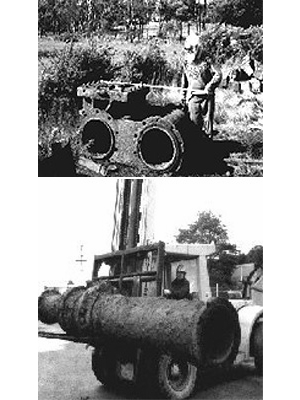Mr Tom Diprose of Legerwood, Tas. worked as a maintenance mechanic in the local dairy factory. Over many years he collected and restored old machinery found in the bush and on farms of north-eastern Tasmania. Of the 26 items in the collection most are in running order.
Grubb Shaft Gold and Heritage Museum

The museum is located in the repaired ruins of large ornate brick engine houses, built in 1905 for the Beaconsfield "Tasmania" gold mine. This 950sqm space is augmented by a 540sqm new building, outside space and a near-by park depicting the flowery gully school and a miner's cottage. A viewing platform overlooks the surface operational area of the Beaconsfield Mine Joint Venture. Average viewing time for the museum is 1 hour.
Subject:
- Historic Site
- Outdoor
- Social History Museum
- Architecture
- Art
- Craft
- Drawings and Prints
- Furniture
- Industrial Design
- Archaeology or Antiquities
- Archives
- Armed Forces
- Domestic Items
- EducationAndSchools
- Genealogy
- Historic Buildings
- Historic People
- Local Government
- Local History
- Medals and Badges
- Agriculture
- Bicycles
- Clothing, Fashion, Costume
- Communications
- Engineering
- Horse Drawn Transport
- Mines and Mining
- Motor Vehicles
- Steam Machinery
- Surveying
- Telecommunications
- Tools
- Gardens
- Mineralogy
- Geology
- Models
- Theatre
- Toys and Games
Items
Steam Machinery
The 'Diprose Collection'

Stamp Battery
Twelve-head stamp battery driven by a waterwheel

A twentyfour head stamp battery was made by H Vivian of Castlemaine, Vic. In 1862 for the "Newchum" gold mine at Pleasant Creek (now Stawell, Vic). Is was moved to NE Tasmania C1880 and reduced to two twelve-head units used at several gold and tin mines until the 1930s. Grubb Shaft Museum salvaged and repaired a twelve-head unit from the "Chintock" tin mine on the Blue Tier, near Weldborough in 1995. This exhibit is driven by an 18 foot diameter waterwheel made by museum volunteers using the original iron components onto which was built wooden components made from Tasmanian celery top pine. Water flow and stamper token movement is press button controlled.
Iron Smelter Model
A twelfth-scale model of th 1873 "Ilfracombe" iron smelter

Moving 1:12 scale model powered by waterwheel. The original iron smelter using local charcoal fuel and limestone had a 30foot waterwheel-powered blower. Although the furnace was unviable, it was the second smelter built in Australia after Mittagong, NSW. The remaining relics are the best known examples of the period.
Mine dewatering pumps
Cornish plunger pumps

The old Tasmania mine at Beaconsfield was famous for the big pumpers needed to keep the workings free of flooding from a large underground aquifer. Three 1350hp pumper units were used and were capable of lifting 8 million gallons (35.4 million litres) from depths of up to 1500 feet (457m) every 24 hours. Power was provided by enormous horizontal compound steam engines. Each engine moved two pump rods down the mine shaft and each rod, weighing approx. 170 tonnes, worked three pumps, moving water to the surface in three stages. The total plant consisted of eighteen pumps.
Rug
Rag Rug
Rug made by Anne Prophet who had a dress shop in Weld Street, Beaconsfield.
